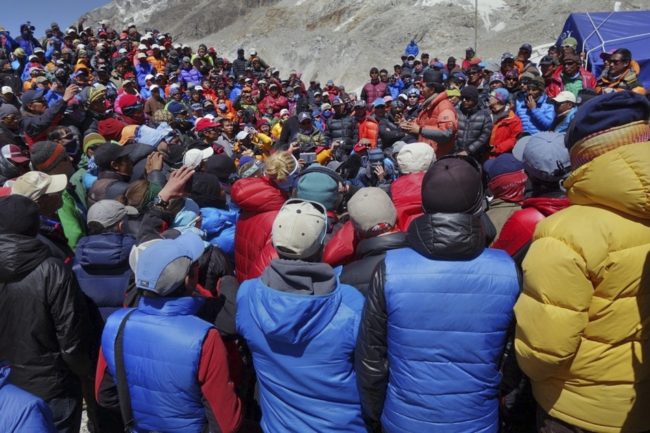
High up on the Nepalese side of Mount Everest, fresh ice avalanches on Friday made it “almost certain that no one will summit the world’s highest mountain from Nepal during this year’s climbing season,” Reuters writes.
The ice did not injure anyone. But it came crashing through the same area where 16 Sherpa guides died one week ago in an avalanche — the single deadliest day ever known on Everest. In the week since, many of the remaining 400 or so Sherpas have been saying they do not want to climb this year, both out of respect for those who were killed and because they want more insurance and other benefits for their families. NPR’s Julie McCarthy detailed the Sherpas’ grievances this week on Morning Edition.
Thursday, Nepalese government officials met with Sherpas on Everest to try to convince them to continue working for the foreign expeditions that have paid tens of thousands of dollars, or more, to climb the mountain.
But on Friday, mountaineer Alan Arnette wrote on the website where he tracks activity on Everest that “teams are leaving — it’s over for all. Time to mourn and regroup.” On Twitter, he compared the situation on Everest to “an airport with [the] terminal open but runways closed.”
While there may be no summit attempts during the April-May climbing season from the Nepalese side of the mountain, National Geographic points out that:
“The northern, Chinese side of the mountain remains open for business. On Thursday, between 50 and 100 climbers were continuing their methodical ascent toward the summit from the north.”
The north side has been less popular with climbers in recent decades, National Geographic adds, because the Chinese government has at times banned expeditions. The south side, though, requires expeditions to pass through the treacherous Khumbu icefall — the site of last week’s tragedy.
9(MDEwMjQ0ODM1MDEzNDk4MTEzNjU3NTRhYg004))
Read original article – Published April 25, 2014 8:15 AM ET
Fresh Avalanches On Everest Appear To End Climbs In Nepal
